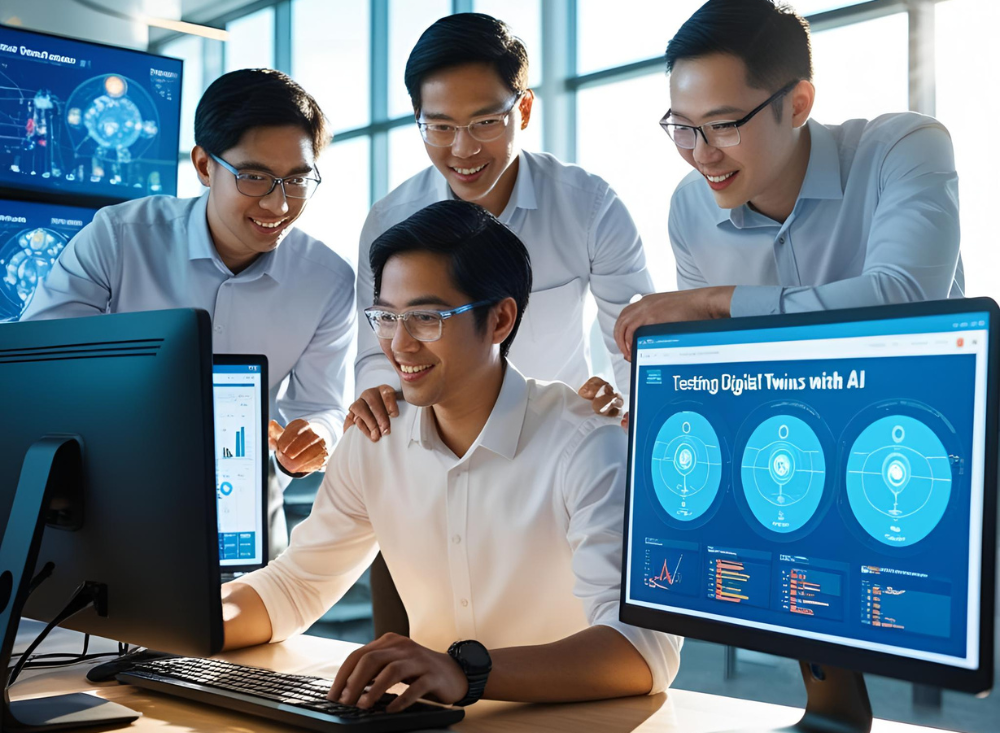
As industries increasingly rely on digital twins—virtual replicas of physical systems—to optimize performance, predict failures, and simulate real-world behavior, the need to test these systems rigorously has become more important than ever. With AI entering the fold, testing digital twins is no longer just about validating models; it’s about building trust in a system that mirrors complex, real-world dynamics.
What is a Digital Twin?
A digital twin is a virtual model of a physical object, process, or system, continuously updated using real-time data from sensors, logs, and operational feedback. These models are used to simulate, predict, and optimize outcomes in a range of domains—from manufacturing and smart cities to healthcare and aerospace.
Why Testing Digital Twins Matters
While digital twins are powerful, they are only as good as their fidelity to the real-world systems they represent. Testing is necessary to ensure:
- Model Accuracy: The twin behaves as the real system would in a wide range of conditions.
- Data Integrity: Real-world data feeds are correctly ingested, interpreted, and reflected in the model.
- Functional Consistency: The twin remains reliable despite changes in software or system design.
- Resilience: The system can recover from unexpected behaviors or data anomalies.
The Role of AI in Testing Digital Twins
Artificial Intelligence transforms the testing of digital twins in several key ways:
1. Intelligent Test Case Generation
AI can autonomously generate test scenarios that reflect real-world edge cases or rare events—scenarios that would be difficult for humans to anticipate. This ensures the twin is robust against unexpected operational conditions.
2. Anomaly Detection
Machine learning algorithms can monitor the digital twin’s behavior over time and flag deviations from expected outputs. These insights can identify inconsistencies between the physical system and its virtual counterpart early in the process.
3. Predictive Validation
AI models can be trained on historical system behavior to predict future states. When the digital twin deviates from these predicted paths, it can indicate the need for model recalibration or code fixes.
4. Simulation Acceleration
By using AI-driven models, simulations can run much faster than traditional physics-based engines. This speeds up validation cycles and allows for more comprehensive scenario testing in less time.
5. Adaptive Learning & Feedback Loops
AI helps digital twins learn continuously from new data. As the real-world system evolves, AI ensures that the digital twin adapts without needing full model retraining, thus reducing maintenance overhead and ensuring long-term accuracy.
Best Practices for Testing Digital Twins with AI
- Start with a high-fidelity model. The closer your initial twin is to reality, the more accurate your AI-enhanced testing outcomes will be.
- Incorporate real-world data early and often. Continuous integration of sensor data ensures that models are based on up-to-date operational behavior.
- Use synthetic data for edge case testing. AI can generate realistic synthetic data to simulate scenarios that haven’t yet occurred in the physical world.
- Validate AI models used in the testing pipeline. Just like digital twins, AI components must also be tested to prevent compounding errors.
- Create closed-loop systems. Let insights from digital twin testing influence physical system design and vice versa.
Conclusion
As digital twins become a foundational element of digital transformation strategies, their accuracy and resilience are paramount. AI plays a critical role in elevating the testing process—enabling predictive insights, automated validation, and real-time adaptability. In a world increasingly driven by virtual simulation, AI ensures that digital twins remain accurate, efficient, and trustworthy reflections of their real-world counterparts.